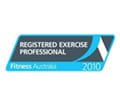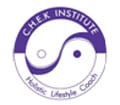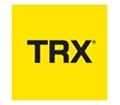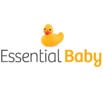What are the most powerful predictors of your lifespan?
Do you need high-tech scans or expensive lab tests or can it be as simple as movements you can test at home, in under a minute?
Research confirms it: Push-ups, grip strength, sit-to-stand ability, and one-leg balance are four of the strongest indicators of your future health and independence.
Each of these movements assesses core pillars of longevity: muscular strength, functional mobility, coordination, and neurological integrity.
Together, they paint a powerful picture of your biological age and how well your body is aging.
Best of all? They are completely free.
And they provide instant feedback you can use to take action today.
1. The Push-Up Test
Why it matters: Push-up capacity is strongly linked to cardiovascular health and upper-body strength.
The Science: A Harvard study published in JAMA Network Open found that men who could perform more than 40 push-ups had a 96% lower risk of heart disease than those who could manage 10 or fewer.
How to test it:
- Perform as many push-ups as you can in a row with good form.
- Modified push-ups are okay if full push-ups are not possible.
2. The Grip Strength Test
Why it matters: Grip strength is a surprisingly strong indicator of overall vitality and mortality risk.
The Science: A large study in The Lancet found that low grip strength was a stronger predictor of early death than even high blood pressure.
How to test it:
- Use a grip dynamometer (if available)
- OR: Try squeezing a bathroom scale
3. The Sit-to-Stand Test (Floor Version)
Why it matters: This test reflects your coordination, lower-body strength, flexibility, and fall risk—all key indicators of functional age and independence.
The Science: In a study in the European Journal of Preventive Cardiology, those who performed poorly on this test were 5–6 times more likely to die within 6 years.
How to test it:
- Sit cross-legged on the floor (or with legs bent if that’s more comfortable).
- Stand up without using your hands, knees, forearms, or sides of your legs for support.
- You start with 10 points. Subtract 1 point for each support used (e.g., placing a hand on the floor, pushing with a knee, etc.)
4. The One-Leg Balance Test (with Eyes Closed Bonus)
Why it matters: This test assesses your balance—a key measure of brain-body connection and nervous system function.
The Science: A 2022 study in the British Journal of Sports Medicine found that those who couldn’t balance on one leg for 10 seconds were almost twice as likely to die in the next 7 years.
How to test it:
- Stand barefoot with arms by your side.
- Lift one foot off the ground and hold for up to 10 seconds.
- For a bonus challenge, try it with your eyes closed.
Calculate Your Physical (Movement) Age
These 4 simple tests can help estimate how well your body is aging. Each test scores out of 10 points. Add your total and compare to the chart below to discover your Physical Age Score.
1. Push-Up Test (Upper Body Strength & Heart Health)
| Result | Score |
| Men > 20 reps, Women > 10 | 10 |
| Men 10–20 reps, Women 5–10 | 5 |
| Men < 10 reps, Women < 5 | 0 |
2. Grip Strength Test (Vitality & Mortality Risk)
| Grip Strength | Score |
| Men > 26kg, Women > 18kg | 10 |
| Men 18–26kg, Women 12–18kg | 5 |
| Men < 18kg, Women < 12kg | 0 |
3. Sit-to-Stand Test (Mobility & Functional Strength)
Start with 10 points. Subtract 1 point for every support used (hand on the floor, knee assist, loss of balance, etc.)
| Final Score | Sit-to-Stand Points |
| 9–10 | 10 |
| 6–8 | 5 |
| <6 | 0 |
4. One-Leg Balance Test (Brain-Body Connection)
| Time Held (Eyes Open) | Score |
| >10 seconds | 10 |
| 5–10 seconds | 5 |
| <5 seconds | 0 |
Add Your Total Score (Maximum = 40)
| Total Score | Estimated Physical Age |
| 36–40 | 25–35 years |
| 30–35 | 36–45 years |
| 20–29 | 46–60 years |
| 10–19 | 61–75 years |
| 0–9 | 76+ years |
Tip: Track your movement age every 3–6 months to monitor progress and prevent decline. Aim to improve your total by just 5–10 points, and you may “reverse” your physical age by a decade or more!
Example:
Let’s say a 52-year-old woman performs the following:
- Push-Ups: 12 reps = 5 points
- Grip Strength: 21 kg = 10 points
- Sit-to-Stand: Uses one hand to assist = 9 points → 1 point off = 9 = 10 points
- One-Leg Balance: Holds for 6 seconds = 5 points
Total Score: 5 + 10 + 10 + 5 = 30 points → Her estimated physical age is 36–45 years — younger than her chronological age. Great result!
Want to Improve Your Physical Age Score?
That is where we come in.
At Core Health Coaching, we integrate these longevity markers into personalised fitness plans that target strength, mobility, and resilience so you can move younger, feel stronger, and live longer.
Book a free Movement & Longevity Check-In today.
We will help you discover your physical age and how to reverse it.
Cameron Corish has been caring and achieving results for the local Wishart, Mansfield and Mt Gravatt community for over 15 years. He takes a multi-disciplined and holistic approach to health and fitness addressing the physical, mental and emotional aspects of one’s health.
Ready to feel and look your best? Book a time for a FREE chat and see how we can make a difference in your life.
If you are not ready yet, come and join our community of health, fitness and wellness enthusiasts with our latest updates. When subscribing to our newsletter you will receive 3 welcome gifts!!
Research References
1.Yang, J., et al. (2019). JAMA Network Open.
2.Leong, D. P., et al. (2015). The Lancet.
3.Araújo, C.G.S., et al. (2012). European Journal of Preventive Cardiology.
4.Araujo, C. G., et al. (2022). British Journal of Sports Medicine.














